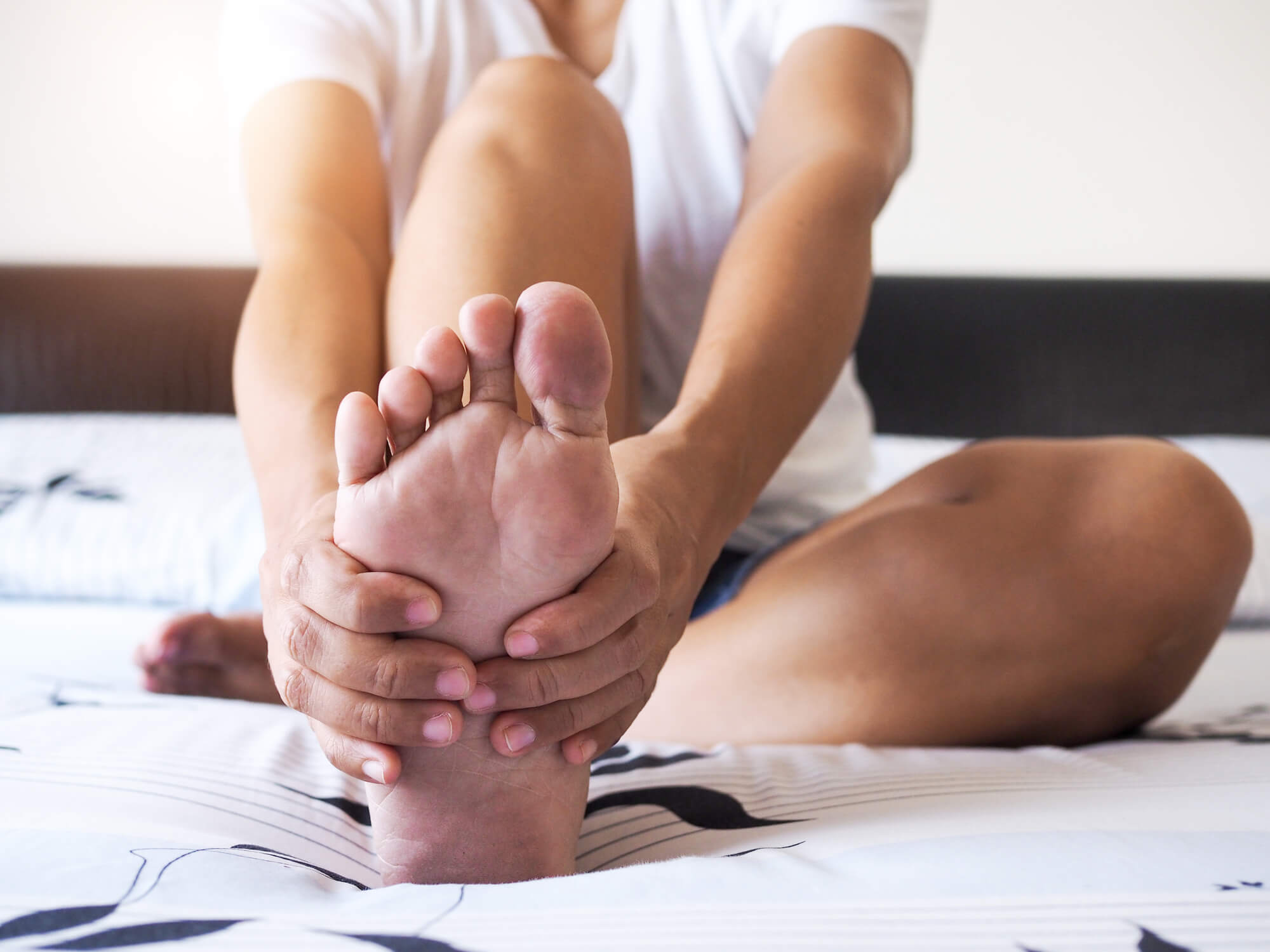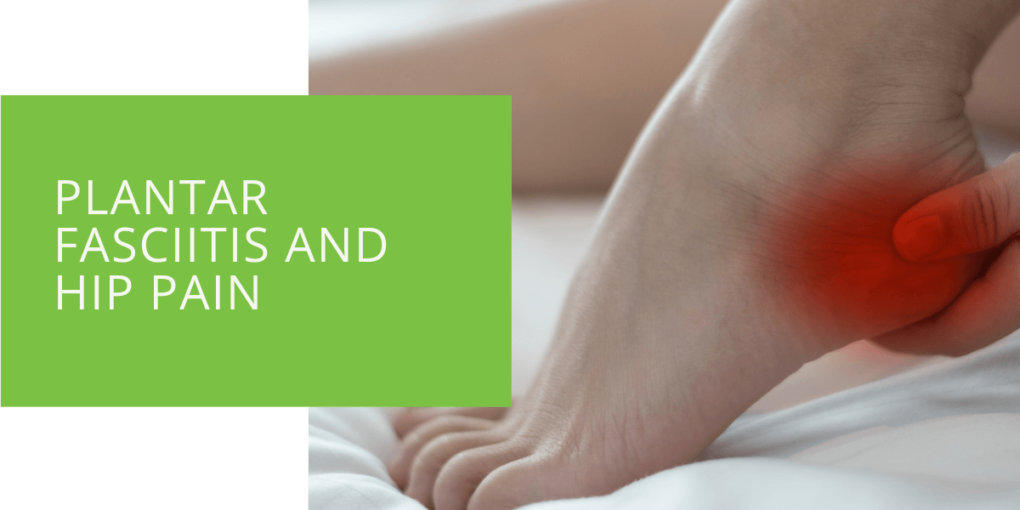Plantar Fasciitis and Hip Pain
Plantar fasciitis and hip pain are common conditions that can cause significant discomfort and affect daily activities. While they may appear unrelated, there is a connection between these two conditions. In this article, we will explore the relationship between plantar fasciitis and hip pain, understand the shared risk factors and biomechanical compensations, and discuss various treatment approaches for finding relief.
Understanding Plantar Fasciitis
Plantar fasciitis is characterized by inflammation and irritation of the plantar fascia, a thick band of tissue that runs along the bottom of the foot. It commonly causes pain and tenderness in the heel and arch, especially with the first steps in the morning or after periods of rest. The repetitive stress and overuse of the plantar fascia can lead to microtears, inflammation, and subsequent foot pain.
Understanding Hip Pain
Hip pain can arise from various causes, including overuse, injuries, or underlying conditions such as osteoarthritis or bursitis. It may manifest as the hip joint, groin, or upper thigh discomfort. Hip pain can significantly impact mobility and affect activities such as walking, standing, or sitting for prolonged periods.
The Connection Between Plantar Fasciitis and Hip Pain
The body's biomechanics and kinetic chain are crucial in understanding the connection between plantar fasciitis and hip pain. Abnormal foot mechanics, such as overpronation (excessive inward rolling of the foot) or flat feet, can alter gait and postural compensations. These compensations can, in turn, affect the hips and surrounding muscles, leading to muscle imbalances and potential hip pain.
Shared Risk Factors
Plantar fasciitis and hip pain share several risk factors. Factors such as obesity, improper footwear, repetitive activities, and certain sports that involve high-impact movements can increase the risk of developing both conditions. Addressing these risk factors is crucial in effectively preventing or managing plantar fasciitis and hip pain.
Biomechanical Compensation and Muscle Imbalances
Plantar fasciitis can cause compensatory changes in gait and posture. These compensations often result in muscle imbalances around the hips as the body tries to alleviate pressure on the affected foot. Tight or weak muscles in the hip region, such as the hip flexors, glutes, or core muscles, can contribute to plantar fasciitis and hip pain. Addressing these muscle imbalances through targeted stretching and strengthening exercises can help alleviate symptoms.

Seeking Relief: Treatment Approaches
Podiatric Interventions
Podiatrists often recommend several interventions to address plantar fasciitis and hip pain. Custom orthotic inserts can provide arch support and proper foot alignment, reducing stress on the plantar fascia and indirectly alleviating hip pain. Physical therapy, including exercises and stretches, can improve foot and hip mechanics, reduce muscle imbalances, and enhance flexibility. Additionally, targeted massages or myofascial release techniques can help loosen tight muscles and improve overall tissue mobility.
Physical Therapy and Stretching
Physical therapy plays a vital role in managing plantar fasciitis and hip pain. A physical therapist can design a tailored exercise program to address muscle imbalances, improve range of motion, and strengthen the foot and hip muscles. Stretching exercises targeting the plantar fascia, calf muscles, hip flexors, and glutes can relieve and improve mobility. These exercises may include calf stretches, plantar fascia stretches, hip flexor stretches, and glute strengthening exercises.
Lifestyle Modifications
In addition to specific interventions, lifestyle modifications can contribute to managing plantar fasciitis and hip pain. Adjusting your daily routine can help alleviate symptoms and promote healing. Here are some lifestyle modifications to consider:
- Maintain a Healthy Weight: Excess weight puts additional stress on the feet and hips, increasing the likelihood of developing or exacerbating plantar fasciitis and hip pain. Strive to achieve and maintain a healthy weight through a balanced diet and regular exercise. This will reduce your feet and hip load, promoting better overall foot health.
- Choose Proper Footwear: Appropriate footwear is crucial for plantar fasciitis and hip pain. Opt for shoes that provide good arch support, cushioning, and shock absorption. Avoid high heels and shoes with inadequate support, as they can worsen symptoms. Consider using orthotic inserts or shoe insoles to support and enhance foot and hip biomechanics.
- Avoid Overuse and Impact Activities: Engaging in high-impact activities or overusing your feet can contribute to plantar fasciitis and hip pain. It's essential to incorporate rest days into your exercise routine and listen to your body's signals. Alternating between low-impact activities like swimming, cycling, or using an elliptical machine can help reduce stress on the feet and hips while maintaining fitness.
- Ice and Heat Therapy: Applying ice packs or cold therapy to the affected areas can help reduce inflammation and alleviate pain. Ice the heel and foot for about 15-20 minutes several times daily. Heat therapy, such as warm compresses or warm foot baths, can also help relax muscles and promote blood flow to the affected areas.
- Maintain Good Posture: Proper posture is essential for optimal foot and hip alignment. Pay attention to your posture throughout the day, whether sitting, standing, or walking. Avoid slouching or excessive leaning forward, as this can put additional strain on the feet and hips. Engaging in exercises that promote core stability and posture, such as Pilates or yoga, can be beneficial.
When to Seek Professional Help
If you experience persistent or worsening symptoms of plantar fasciitis or hip pain, it is advisable to seek professional help. A podiatrist or healthcare professional specializing in foot and hip conditions can provide a comprehensive evaluation, accurate diagnosis, and personalized treatment plan. In severe cases, they may recommend additional interventions such as corticosteroid injections, physical therapy sessions, or even surgical options.
Remember, each individual is unique, and the treatment approach may vary based on the severity of your condition and your specific needs. It's important to consult with a healthcare professional to determine the most suitable treatment plan for you.
Conclusion
Understanding the connection between plantar fasciitis and hip pain is crucial for effective management and finding relief. By addressing the underlying causes, such as biomechanical compensations and muscle imbalances, and implementing appropriate treatments and lifestyle modifications, you can reduce pain, improve mobility, and enhance your overall foot and hip health. Remember to consult a podiatrist or healthcare professional for a comprehensive evaluation and personalized treatment plan to ensure the best possible outcome.

